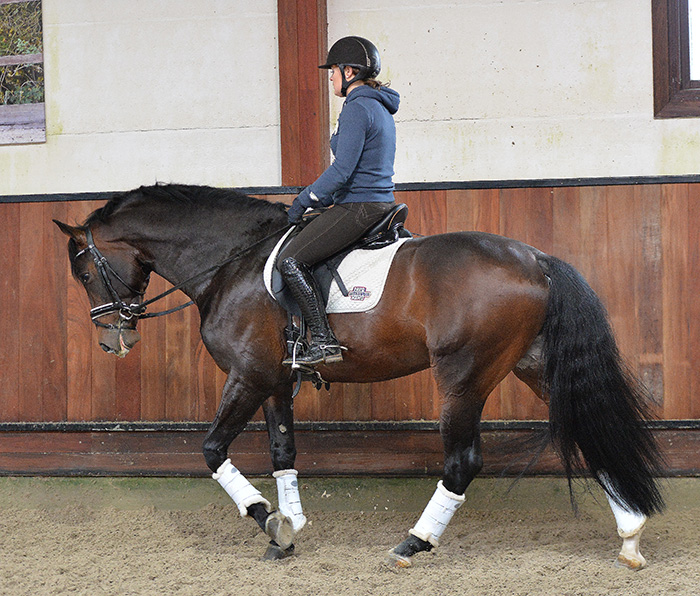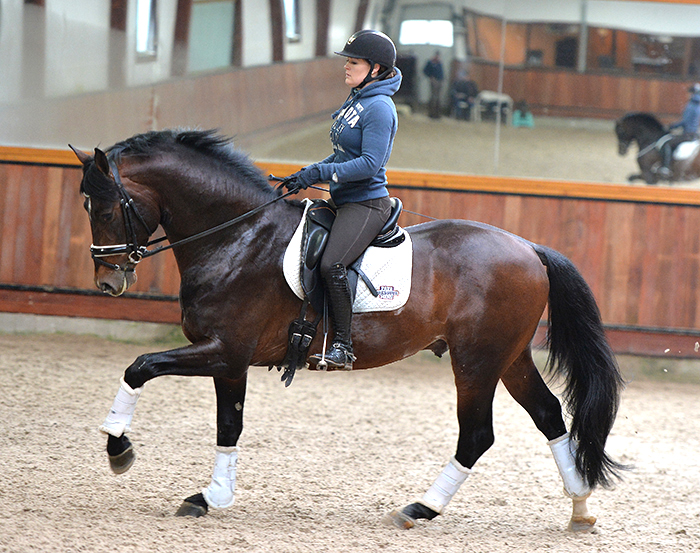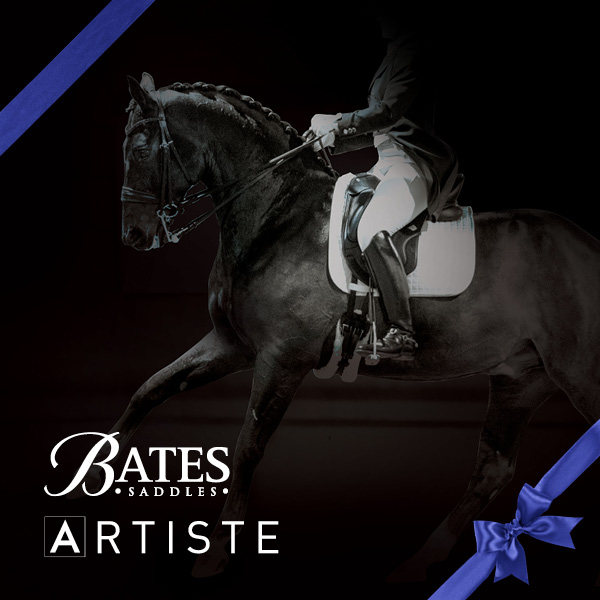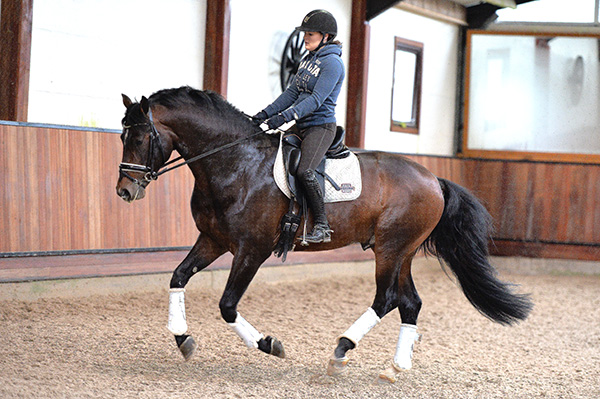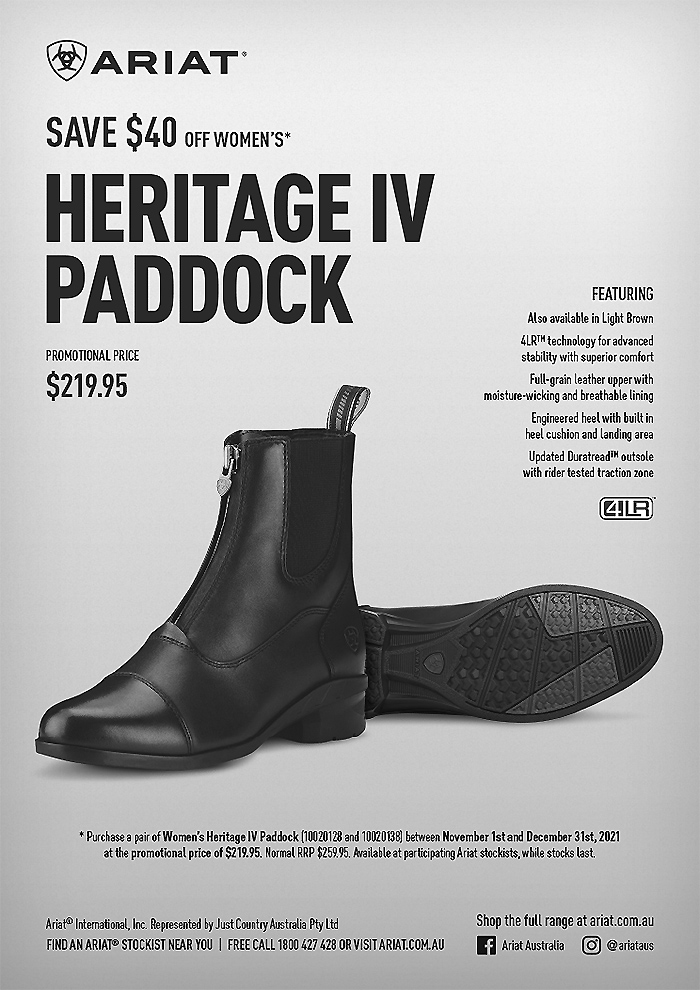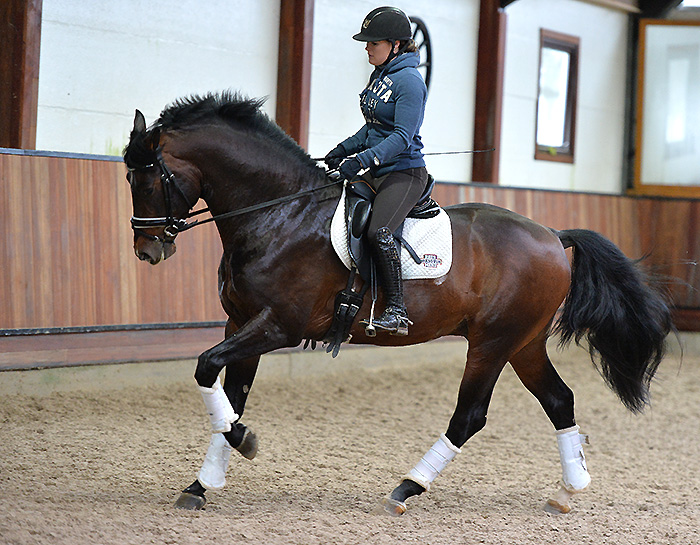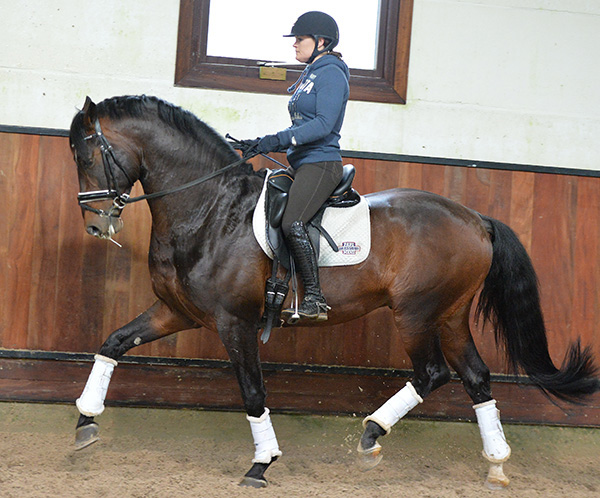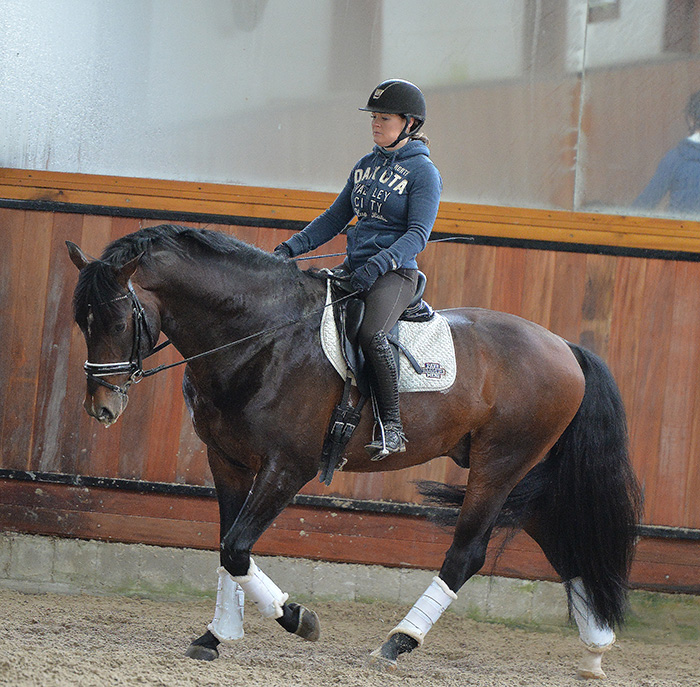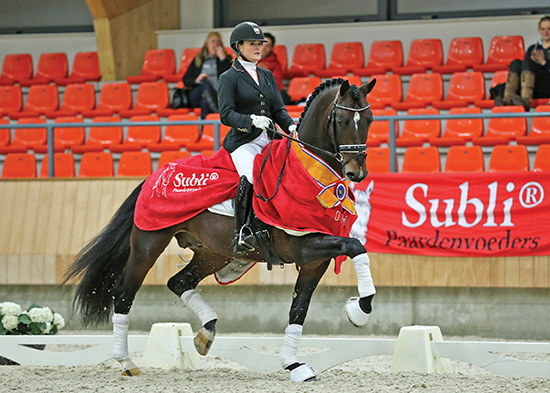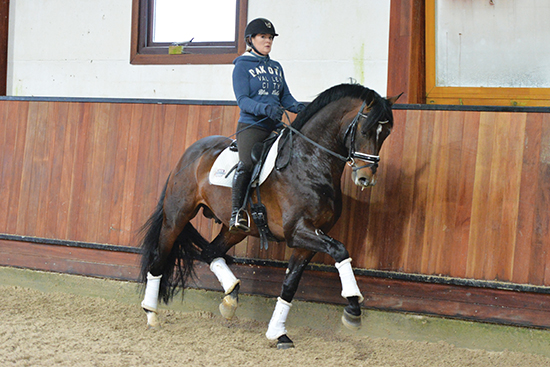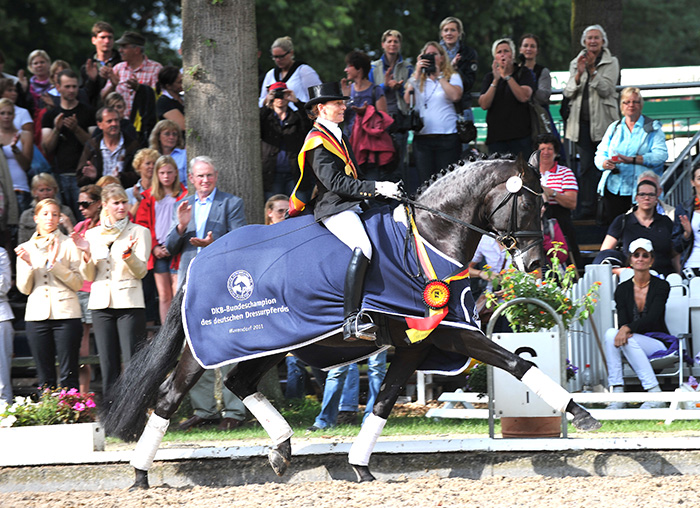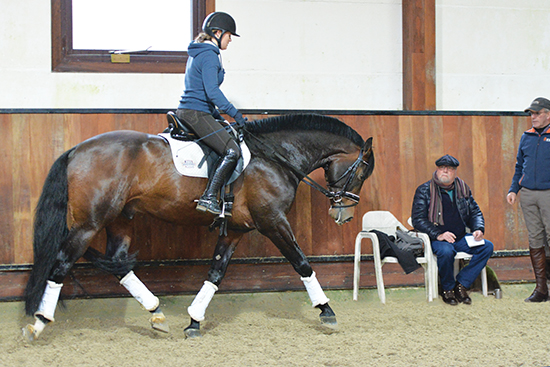 Story by Chris Hector & Photos by Roz Neave
Story by Chris Hector & Photos by Roz Neave
Johan Hamminga and Jennifer Sekrève, working with the four-year-old stallion, Forty.
The youngster is interestingly bred – Forty is by UB40, a son of one of the best sons of Jazz, Olivi, and out of a mare by Contango, out of a Ferro mare. Selected to go on to the KWPN performance test, Forty injured himself being lunged and was sent home. Since then he has been licensed by Holland’s ‘other’ studbook, the NRPS.
Jennifer starts the working session in walk, lots of walk, leg yield walks become big sweeping pirouettes, there is no hint of resistance, the bend changes and instead of leg yields the horse is stepping into the bend, all the time the hind legs are becoming more and more engaged, all the time it is a wonderful big clear walk.
From walk, the young stallion is straight into canter, and right from the start it is a collected, balanced canter. Johan is sitting next to me, giving me a running commentary:
“The horse must stay in rhythm when he collects, if the horse loses rhythm when he collects, then it is a wrong engagement, and as the horse collects, the rider must make him more supple on the inside rein, more supple on the outside rein, giving through the poll, coming from behind. From more engagement, he achieves a more steady top line, then a little working through the poll, so he is working in the whole body, working more muscles in the top line… good, let him loosen, let him stretch but always on both reins and always in balance.”

more follows
“It’s important in canter that you don’t let the horse go so long and deep in the neck that it loses balance, you have to figure out how long you can go and still keep the balance.”
More follows
“Now it is possible to collect with a longer, lower neck position because the horse is loose in his back muscles. It is only possible to keep the horse longer in the neck when he carries more weight.”
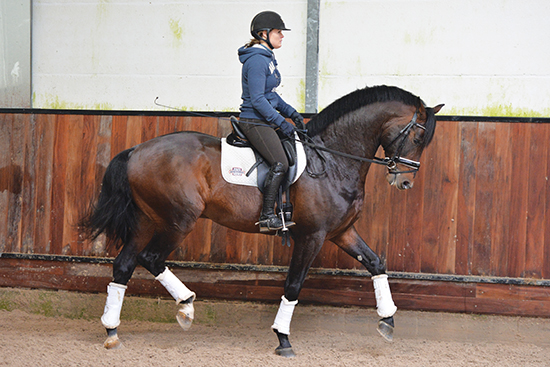 Jennifer has Forty back in walk but is asking for a few steps of trot, almost half steps, then back to walk: “Ask a little, give, relax. He has to learn that you can make him quicker behind. Brave! Short aids, short movement, short aids, short movement. When he doesn’t give a reaction, repeat the aids, short aids, just a few steps of trot, brave – okay, out and forward.”
Jennifer has Forty back in walk but is asking for a few steps of trot, almost half steps, then back to walk: “Ask a little, give, relax. He has to learn that you can make him quicker behind. Brave! Short aids, short movement, short aids, short movement. When he doesn’t give a reaction, repeat the aids, short aids, just a few steps of trot, brave – okay, out and forward.”
“When you keep the horse always in front of you, he can use his hind legs – when you make a horse short in front, it is not possible for him to use his hind legs, not possible to get them under his body.”
“Enough Jennifer, there is still tomorrow. The problem with such a horse is that it is easy to be training him too long. You must make a rule, not longer than 30 or 40 minutes, he has given so much, and he will not be five years old for another four months. We have so much fun with this one. See in long rein, even with his nose level with his front knee, the hind leg still comes from behind.”
As Jennifer rides him on the buckle around the arena, she says he is just the same at a show: “I have a photo, at the prize giving, all the other horses are going crazy, and he just stands there with his ribbon, proud of himself, he’s like a king. When you ride him, you feel so much quality, such a strong athletic body.”
Jennifer was a test rider and that was how she discovered Forty…
“Forty is a really special horse, I rode him in a competition for three-year-olds, I was the test rider riding the best three horses. It was in the evening and he was kind of tired, but WHOO, you felt so much athleticism in the body, nothing disturbs his body. That was the first time I rode him…”
Is he the most special horse you have sat on?
“Yes. We have had really nice, high quality horses, but Forty, his body is really special, really different to all the other super horses. Riding him is a pleasure – yesterday we trained him a little bit, but actually we’ve tried to keep him lower in miles, we don’t ride him for long, and do more work in the walk, like I did when I was riding him yesterday, bending and going sideways, loosening him in the body, just short times.”
You get quite a lot of collection, in the walking pirouettes, you were getting him close together behind and coming up in front…
“You train him, but not a lot of miles trotting or cantering around, you still touch the muscles in the body, and so when you canter, he is already there.”
Johan on photos of Forty:
“This is a moment in the trot, in this moment, it is picture from the front side, but you see there is a lot of bending in the legs, especially the left hind leg coming very far under the body, that is the reason that Jennifer can keep the horse in a good balance. The neck is uphill out of the wither and there is a steady contact, smooth on the bit – normal in the eyes, it is just a bit above the horizontal balance, so it is a nice picture I think.”
This article originally appeared in the May 2015 edition of The Horse Magazine
ADVERTISEMENT
Breeding a dressage star? Consider Fürstenball – successful competitor himself and sire of winners all over the world Go to www.ihb.com.au



